5 Easy Fly Fishing Knots For Beginners That Fly Guides Use
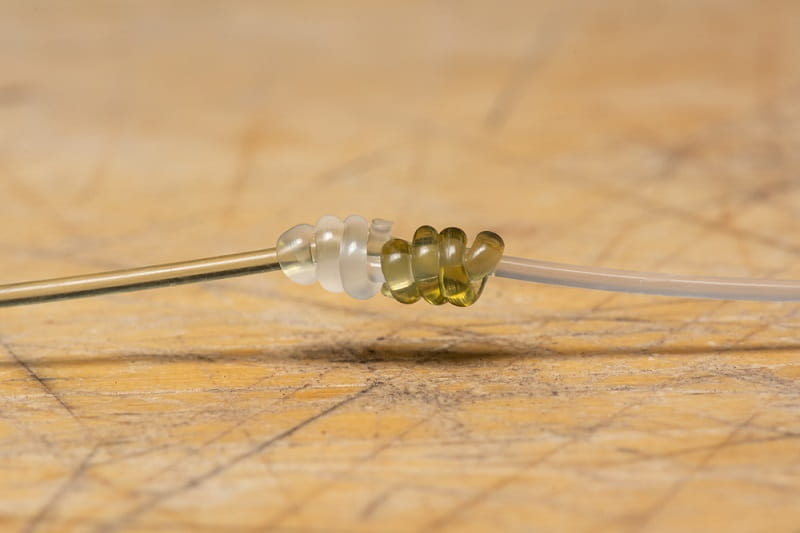
Fly fishing knots do not need to be complicated or confusing, even for beginners. As a fishing guide who teaches fly fishing, I have tried many different knots. Let me tell you from experience that there are really only two knots that you will need to fly fish.
The only two knots new fly anglers need to know are the Improved Clinch Knot, which is great for trying a fly to the leader or tippet, and the Triple Surgeons Knot, which is great for tying two pieces of line together.
These knots are easy to learn and fast to tie.
I use these two knots from time to time, but I prefer to use two other knots more often because they have some slight advantages.
As you become more advanced in fly fishing, you may require four types of knots. I will also reveal a guide tip to make all your knots stronger.
Fly Fishing Knots For Beginners
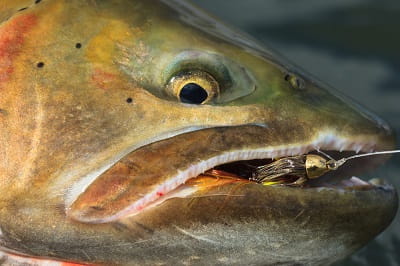
The faster you can tie a strong knot, the more fish you will catch, and the fewer fish you will break off.
When you learn to tie these knots, you will be able to set up your leader faster when you are out in the water and change flies quickly.
Pro Tip: During guide trips or lessons, I tell my clients that I hate teaching anglers how to tie knots on the river because I think knots are something you should learn and practice at home, and not on the river where you should be focusing on learning how to fish.
Five Types Of Knots Used In Fly Fishing
There are four types of knots you may eventually need to know when fly fishing. The four types of knots used in fly fishing are:
- Fly Knot – This is the knot you use to tie your fly on
- Line-to-line Knot – A frequently used knot used for connecting two pieces of line together, like when tying your tippet to your leader
- Fly Loop Knot – Connecting your fly with a loop knot can give your fly more action in the water. Streamer anglers and Spey anglers use this type of knot a lot.
- Loop-to-Loop Knot – This loop knot is meant to attach two lines together in a loop-to-loop type connection. This knot is rarely used by most anglers.
- Line Setup Knots: There are a couple of knots used to tie the fly backing to the reel and to the fly line, but these are very rarely used, so I won’t get into them here.
Pro Tip: Tightening most knots can cause friction and this friction can weaken or even damage the line or break it.
You might see the line above the knot go a bit curly or not be perfectly straight. This usually indicates friction and possible damage. To strengthen all your knots and prevent friction damage, simply wet the knot with saliva or water before you tighten the knot fully.
Here are some of the best fly fishing knots for beginners.
1. Improved Clinch Knot
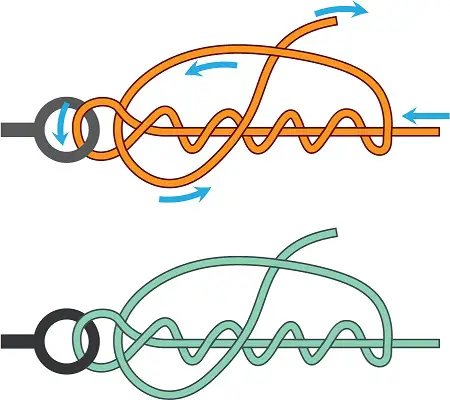
An easy but very effective knot for tying your fly to your leader or tippet.
It’s very similar to the old or regular Clinch Knot, which is sometimes known as the “Fishermans Knot.”
With the Improved Clinch Knot, you only need one extra pass before you secure it. This extra pass gives the knot a lot more strength than a regular Clinch Knot (which you should not use).
See Video: How To Tie The Improved Clinch Knot
2. Davy Knot And Double Davy Knot
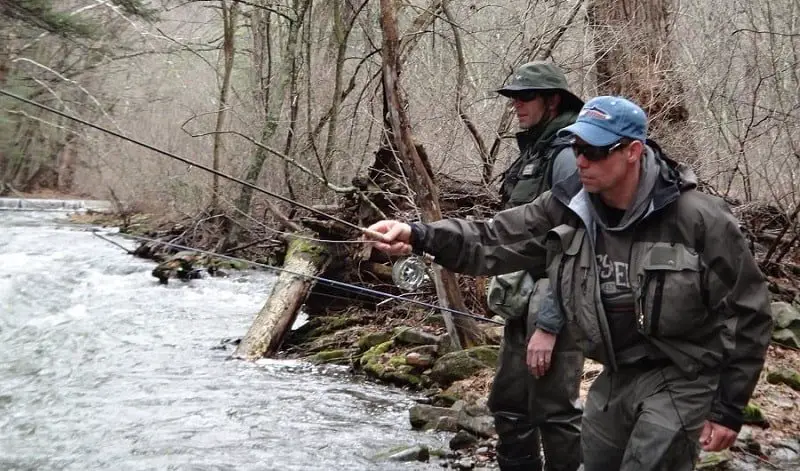
I was training with George Daniel who is one of the top guides, instructors, and fly competition anglers in the USA, and he was using a knot that I’d never seen before. He called in the Davy Knot.
When I asked him why he uses it he said all the guys on Team USA fly fishing team use it because it’s fast and easy to tie, which allows them to change flies quickly ( time is important in competitions).
He also said that he uses it because it has a very tiny knot size compared to larger knots like the improved clinch knot. This can be beneficial when using very small flies, and for hiding the line better from wary trout.
The Single Davy Knot is not as strong as the Double Davy Knot, but it’s still a great knot for small to medium-sized trout fishing and when using small flies.
The Double Davy Knot is the knot I use 90% of the time now, and I use it for trout, salmon, steelhead, and bass.
See Video: How To Tie The Davy Knots
3. Triple Surgeons Knot
The Triple Surgeon’s knot is used to connect two pieces of leader material to each other, and this is the knot I recommend to my fly fishing students.
It’s super strong and easy to tie, but, I’ve seen it tied wrong, and it’s a weak knot when it’s not tied correctly.
There is also the Double Surgeons Knot, which is where you pass the line through the loop two times instead of three times. It is also a good strong knot but not as strong as the Triple Surgeons Knot.
Watch: how to tie the Triple Surgeons Knot.
4. Uni Knot and Uni-to-Uni Knot (or Double Uni Knot)
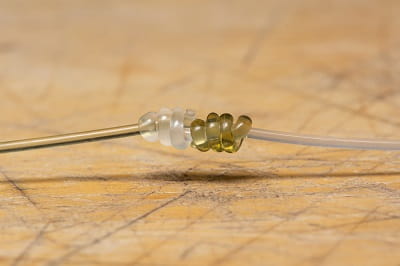
Anglers can use these fishing knots anywhere to make every type of connection.
It comes in handy if you lack extra time to learn and practice new knots.
You can use the single Uni Knot to attach your fly to your leader and the Uni-to-Uni knot for fly-line connections.
Also called the Double Uni Knot, the Uni-to-Uni knot is strong and forms a streamlined knot that can run through the guides of your rod easier than the Triple Surgeons Knot.
For me, it takes a little longer than the Triple Surgeons Knot because with the Double Uni Knot, it’s like tying two knots, but I like the streamline knot, so I use it much more often, especially on sections of the leader that will be in the rod guide more often.
The other reason I like this knot better than similar line-to-line knots is that you can tie two different diameters of line together, and it will still be very strong.
Other knots do not work well when there is a large difference in diameter, such as tying a 12-pound line to 3-pound line.
Watch: Tying The Double Uni Knot
5. Non-Slip Loop Knot
The Non-slip Loop Knot is also known as the terminal knot. It is used for tying your fly to the line. This is a popular knot for streamers, wet flies, Spey flies. I use it all the time when spey fishing.
Do not use it for dry flies as it might create an unnatural indent on the water surface. I have also found no advantage to this knot when nymph fishing and actually prefer the way nymphs sit in the water with non-loop knots.
The Non-Slip Loop Knot is one of the best fishing knots since it gives the fly enough room to shake and wiggle in the water.
It can, therefore, provide as much motion as possible to attract the fish.
Watch: How To Tie The Non-Slip Loop Knot
6. The Perfection Loop
At times, you will need to tie a loop knot similar to the loop at the end of the leader. This loop is good for loop-to-loop connections. I also use it to attach new dropper tags when using a Euro nymphing Leader.
Most new anglers would rarely, if ever, use a loop knot so it’s not imperative that you learn this knot.
Watch the video: How To Tie The Perfection Loop Knot
As a guide who ties a lot of knots for clients, I only need 4 knots, yep, that’s it! If you have a question or want to share your favorite knot, let me know in the comments section below.
Tight Lines
Graham

I am new to fly fishing and only know one not and this was good info also what would you recommend one a rod and real for northern MN wooded stream for brook , brown and rainbow that is good and cheap also what type of line?
Hi Aaron,
Happy to hear this article has helped you out.. Keep it simple buddy..
Regarding The best rods, I have an article with 15 of this year’s best fly rods from cheaper $60 dollars fly rods up to $800 plus fly rods. .. See 15 best fly rds for trout.
Best of luck
Graham